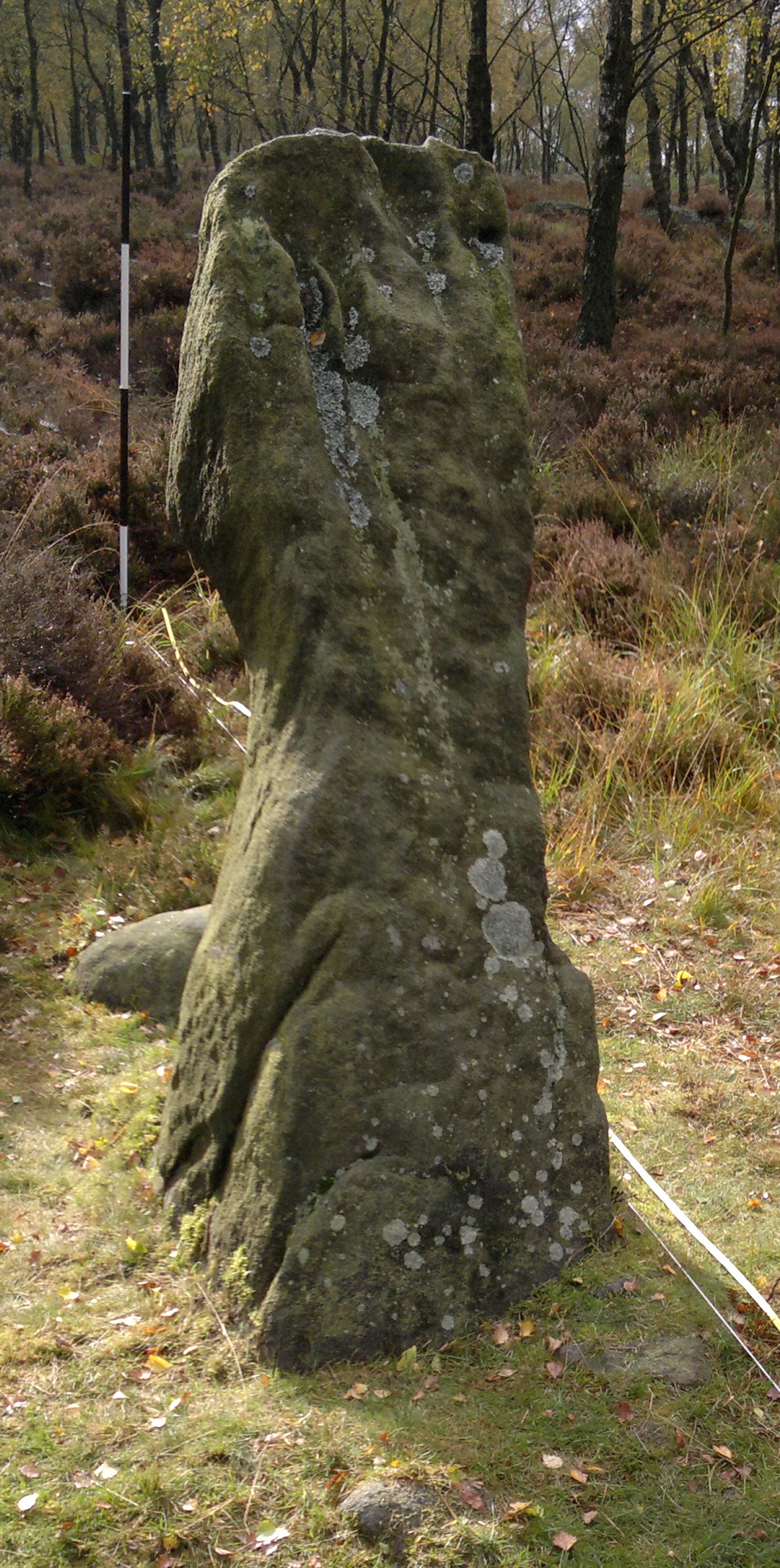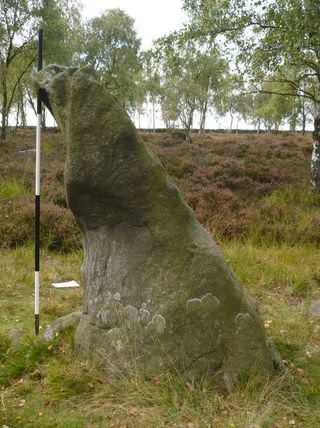4,000-Year-Old Stone Monolith Likely an Astronomical Marker

An ancient stone monolith in England was likely an astronomical marker, according to new archaeological evidence.
The 4,000-year-old stone is triangular in shape and angles up toward geographic south. Its orientation and slant angle are aligned with the altitude of the sun at midsummer, researchers said.
And new evidence shows that there are packing stones around the base of the 7.2-foot tall (2.2-meter) monolith, indicating that it was placed carefully in its location and position, they added.
"Given the sensitivity of the site, we can't probe under the surface of the soil," astronomer Daniel Brown of Nottingham Trent University in England said in a statement. "However, through our survey, we have found a higher density of packing stones on one side, supporting the case that the stone has been orientated intentionally." [Aerial Photos: Mysterious Stone Structures]

The monolith is located at a ridge called Gardom's Edge in the Peak District National Park near Manchester, an area that shows evidence of human occupation extending far back though its history. Other ancient monuments such as Bronze Age roundhouses and a late Neolithic enclosure have been found nearby.
The seemingly astronomical monolith is thought to have been erected by Neolithic people around 2000 B.C.
"The stone would have been an ideal marker for a social arena for seasonal gatherings," Brown said. "It's not a sundial in the sense that people would have used it to determine an exact time. We think that it was set in position to give a symbolic meaning to its location, a bit like the way that some religious buildings are aligned in a specific direction for symbolic reasons."
Get the Space.com Newsletter
Breaking space news, the latest updates on rocket launches, skywatching events and more!
The researchers used a 3D computer model to analyze how the stone would have been illuminated throughout the different seasons four millennia ago, given that the tilt of Earth's axis has changed over time.
Their model showed that the slanted side of the stone would remain in permanent shadow during the winter, while it would have been illuminated only in the morning and afternoon during most of the summer. At midsummer, the sun would have lit the stone brightly all day.
"The use of shadow casting in monuments of this period is quite rare in the British Isles," Brown said. "But there are some examples including New Grange, Ireland, and some Clava cairns in the north-east of Scotland that have been proposed to include the intentional use of shadows. Both are associated to burial sites using the symbolism of a cyclic light and shadow display to represent eternity. Given the proximity of the Neolithic enclosure and possible ritual importance of this site, the Gardom's Edge monolith could be another such example."
Brown will present his findings Tuesday (March 27) at the National Astronomy Meeting in Manchester, England.
You can follow SPACE.com assistant managing editor Clara Moskowitz on Twitter @ClaraMoskowitz. Follow SPACE.com for the latest in space science and exploration news on Twitter @Spacedotcom and on Facebook.
Join our Space Forums to keep talking space on the latest missions, night sky and more! And if you have a news tip, correction or comment, let us know at: community@space.com.

Clara Moskowitz is a science and space writer who joined the Space.com team in 2008 and served as Assistant Managing Editor from 2011 to 2013. Clara has a bachelor's degree in astronomy and physics from Wesleyan University, and a graduate certificate in science writing from the University of California, Santa Cruz. She covers everything from astronomy to human spaceflight and once aced a NASTAR suborbital spaceflight training program for space missions. Clara is currently Associate Editor of Scientific American. To see her latest project is, follow Clara on Twitter.










